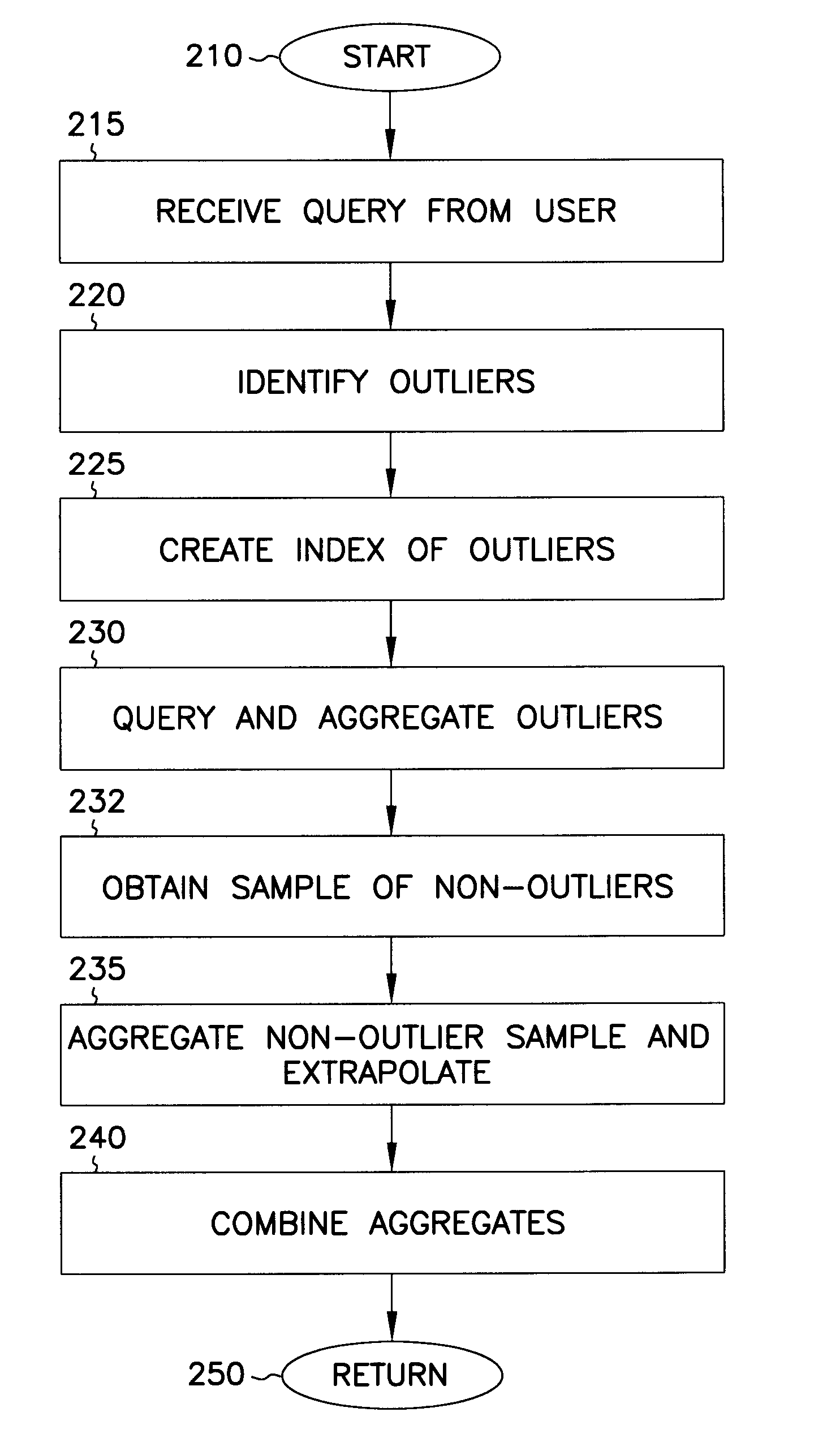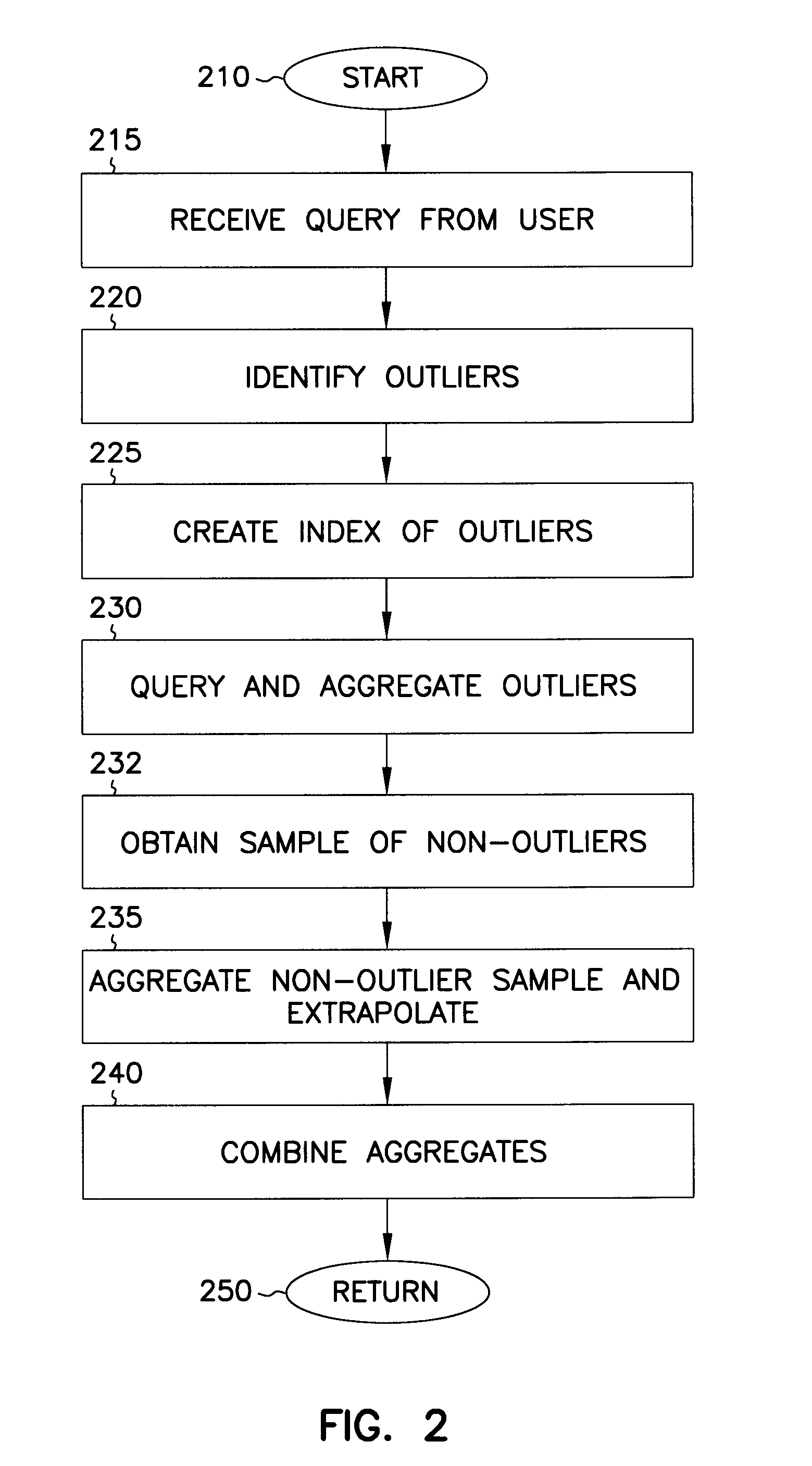Sampling for aggregation queries
a technology of aggregation and sampling, applied in the computer field, can solve the problems of large volume of data, resource-intensive execution of such applications, and large size of application programs and computers, and achieve the effect of low selectivity
- Summary
- Abstract
- Description
- Claims
- Application Information
AI Technical Summary
Benefits of technology
Problems solved by technology
Method used
Image
Examples
example 1
Suppose there are 10,000 tuples of which 99% have value 1 in the aggregate column, while the remaining 1% of the tuples have value 1000. Consider using a uniform random sample of size 100 to estimate the average value of the column over all tuples. It is quite likely that the sample would not include any tuple of value 1000, leading to an estimate of 1 for the average value. On the other hand, if perchance two or more tuples of value 1000 were to be included in the sample, then the estimate of the average value would be more than 20.98. In either case, the estimate would be far from the true value of the average which is 10.99. It is only in the case where there is exactly one tuple of value 1000 in the sample that we would obtain a reasonable estimate of the average value. But the latter event has probability only 0.37. Therefore, with high probability a large error in the estimate would result.
In this example it is observed that a skewed database is characterized by the existence ...
PUM
 Login to View More
Login to View More Abstract
Description
Claims
Application Information
 Login to View More
Login to View More - R&D
- Intellectual Property
- Life Sciences
- Materials
- Tech Scout
- Unparalleled Data Quality
- Higher Quality Content
- 60% Fewer Hallucinations
Browse by: Latest US Patents, China's latest patents, Technical Efficacy Thesaurus, Application Domain, Technology Topic, Popular Technical Reports.
© 2025 PatSnap. All rights reserved.Legal|Privacy policy|Modern Slavery Act Transparency Statement|Sitemap|About US| Contact US: help@patsnap.com



